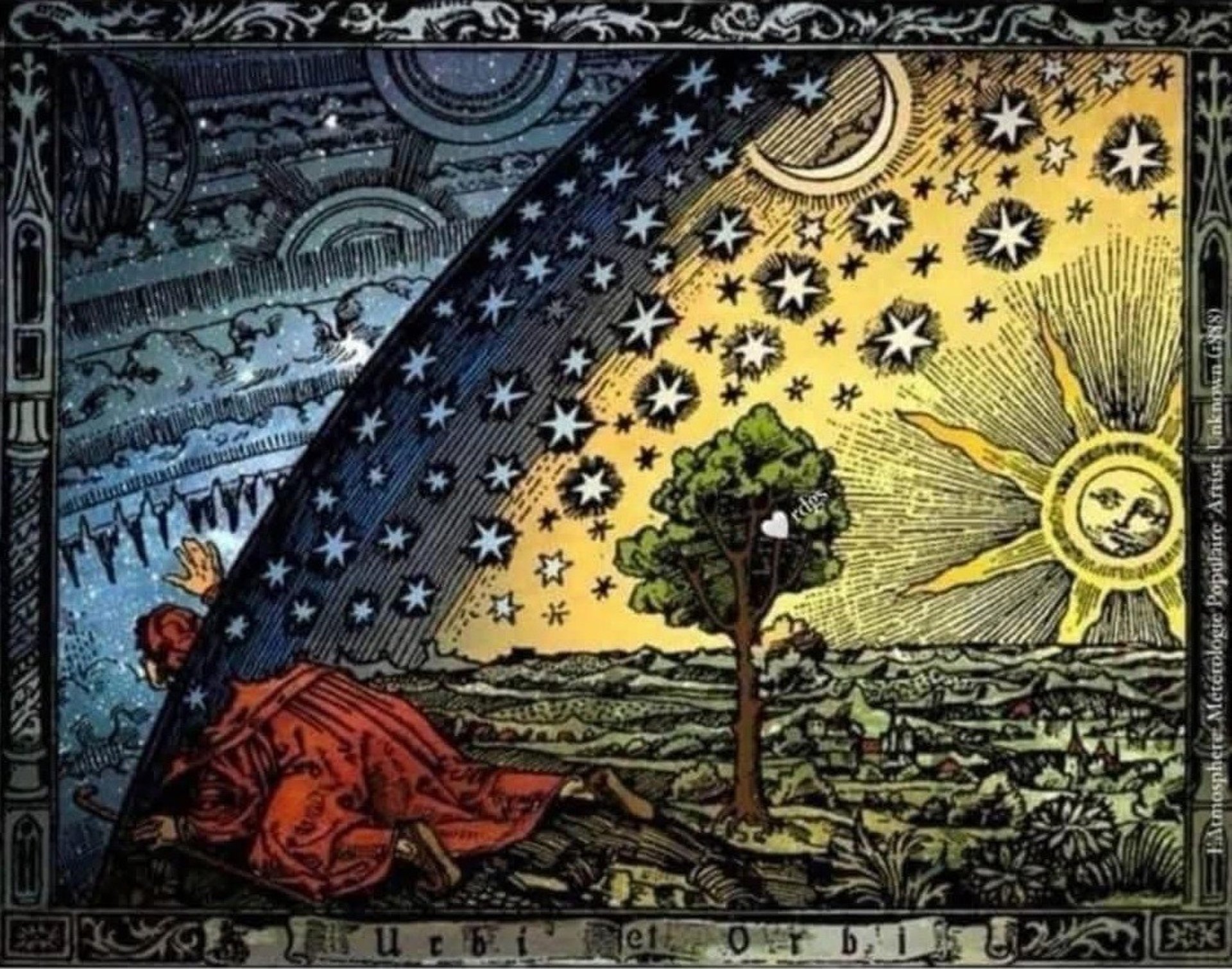🌐 Dimensions: Structure and Sentience
A Foundational Page of Similarity Theory
Similarity Theory proposes that Consciousness, Time, and Dimension form the three pillars of existence.
This page explores Dimension as the framework of structure and sentience — the field through which consciousness expands, shaping the physical and metaphysical architecture of reality itself.
See the Introduction to Similarity Theory for the core concepts and structure.
🌀 Philosophical Framework
🪞 From Scientific Framework to Living Theory
In science and mathematics, dimensions hold profound significance. Traditionally, we recognise three spatial dimensions — x, y, and z — which define length, width, and depth. Time, as the fourth dimension, forms the foundation of Einstein’s relativity.
These four are experimentally confirmed, forming the framework of modern physics. Yet exploration did not stop there.
🌀 Beyond Four Dimensions: Physics and Mathematics
In the early 20th century, Theodor Kaluza proposed adding a fifth dimension to Einstein’s field equations to unify gravity and electromagnetism. Oskar Klein refined this idea, suggesting the fifth dimension was compactified — curled too tightly to perceive. This became the seed for high-dimensional physics.
Later, string theory and its extension, M-theory, proposed that the universe consists of 11 dimensions:
The fifth unifies fundamental forces.
Dimensions six through ten provide mathematical consistency for string vibrations.
The eleventh introduces “branes,” vast membranes on which entire universes may float.
M-theory remains speculative. Its mathematics is elegant, but evidence is indirect. Importantly, mathematics itself begins to falter beyond the 11th dimension.
🔹 Just because mathematics cannot go further does not mean reality cannot.
🌌 Dimensions in Similarity Theory
Similarity Theory bridges physics and lived existence. While physics describes dimensions mathematically, Similarity Theory describes them existentially.
Dimensions are not walls but frameworks of information. They shape the scope of awareness and the rhythm of experience.
Just as a film reel holds countless frames that consciousness animates, dimensions provide the stage upon which those frames can exist. Each new dimension contains those below it, just as an adult contains the child they once were. Nothing is erased — everything is built upon.
🧭 The Dimensional Hierarchy of Sentience
Reframing dimensions through being:
First Dimension — Existence
Rocks embody the first dimension. They simply are. Stillness-consciousness.Second Dimension — Life
Plants grow, seek light, and respond. They touch the third dimension but cannot comprehend it.Third Dimension — Sentience
Animals and humans think, choose, and remember. We perceive time, but only linearly.Fourth Dimension — Higher Awareness
Beings here inhabit time as terrain. To them, time is navigable. Even the simplest fourth-dimensional being would exceed our greatest machines. To them, we appear as frozen shadows.
From the vantage of a twelfth- or fifteenth-dimensional intelligence, we may appear as inert as rocks. This is not degradation, but perspective. Every being exists within its own conscious bandwidth.
🔭 Dimensions, Movement, and the Laws of Physics
Beings that share the same dimension also share the same local physics. A rock, a plant, an animal, and a human all obey the same chemistry, gravity, and electromagnetic forces. What separates them is not separate physical laws but their scope of awareness and agency within those laws.
Rocks (first dimension) persist in simple stability — existence without movement.
Plants (second dimension) add growth and responsiveness but lack free movement through space.
Animals and humans (third dimension) introduce locomotion, purposeful action, and social organisation.
Movement is a practical marker of dimensional distinction: the more a being can act within its environment, the higher it stands in dimensional hierarchy. Humans extend this further through creativity, exploration, and invention, reshaping landscapes rather than simply living within them.
When consciousness advances into the fourth dimension, the difference is as radical as the difference between plants and humans. Time itself becomes a terrain — navigable and malleable — and beings in that dimension treat temporal relations as part of their landscape. To them, our existence appears as limited as a plant’s awareness seems to us.
Thus, while physics remains constant within a given dimension, higher dimensions transform the operative constraints. They create new possibilities for experience and agency, making each dimensional leap not just incremental change but the entry into a new world.
Each transition multiplies awareness and rewrites the rules of existence.
✨ Callout — Curiosity, resonance, and the limits of lone invention
You can sketch a new frame alone — plant vegetables, fashion a wooden cart — but such local frames rarely displace the broader field. Established frames are like high-performance vehicles: attractive, efficient and already serviceable. They exert strong resonance and enforce boundaries; if your pattern mismatches a frame’s ethics, you will be repulsed rather than welcomed. Founding a durable, shared frame requires scale, alignment, sustained practice and infrastructure.
When curiosity pushes consciousness beyond its current limits there are two clear options: attempt to instantiate a new frame from scratch, or move into an existing one whose resonance matches you. The difference is practical as much as metaphysical. Building something alone is possible — you can plant vegetables, fashion a crude wooden cart, or invent a small local practice — but these efforts are circumscribed by available resources, scale and connections. By contrast, pre-existing frames are like high-performance vehicles polished, extensive and ready to carry you far. Because established frames already contain many aligned occupants and supporting infrastructures, they exert social and informational pull that is difficult to resist. Crucially, frames also enforce selection: a loving, cooperative frame will not simply accept those whose pattern is predatory or exploitative — incompatible patterns are repulsed, like oil and water. You can, in principle, create a new frame alone, but to make it durable and shareable you need the ingredients of scale — sustained practice, coordinated effort, material and informational infrastructure, and ethical magnetism. Practically, most individuals advance by joining larger, compatible frames while gradually building the capacities required to found broader systems themselves.
🔦 Analogy: The Tower of Light
Imagine dimensions as floors of a tower.
A candle on the first floor lights only that level.
A torch on the second lights more.
A beacon on the third shines further still.
Consciousness is the flame. Dimension is the tower it climbs. Each level expands perspective while retaining echoes of the lower floors.
🌠 Glimpses Beyond
Human imagination may be a doorway into higher dimensions. Dreams, archetypes, synchronicities — brief contacts with realities where time loosens.
Unexplained phenomena — UAPs, cryptids, flashes of the uncanny — may be intersections, flickers of realities across ours.
🌀 Toward the Infinite Continuum
Just as numbers extend endlessly, so too do dimensions.
The leap from 0 to 1 — from nothing to something — is the hardest. Beyond that, each new layer emerges more easily once the pattern is known.
At higher levels, dimensions interweave. Time becomes fluid. Consciousness expands. Realities nest within realities, like spirals unfolding forever.
Similarity Theory holds that these dimensions are not separate universes, but part of one continuous fabric of existence.
🔬 Scientific Grounding
Kaluza–Klein and the Fifth Dimension
Kaluza (1921) and Klein (1926) showed that adding a compactified fifth dimension unifies gravity and electromagnetism. This is one of the first hints that dimensions beyond four have explanatory power.
String Theory and M-Theory
Modern string theory requires 10 spatial dimensions; M-theory extends this to 11, introducing branes that may host entire universes (Witten, 1995). While unproven, these models illustrate how higher dimensions may shape the cosmos.
Relativity and Dimensional Perception
Einstein’s relativity showed that time is woven with space, not absolute but relative. This prepares the way for Similarity Theory’s claim that dimensions are frameworks of awareness, not just geometry.
Multiverse Models
Tegmark (2014) describes multiple levels of the multiverse. Level I–III are variations of physical laws and quantum branching; Level IV suggests all mathematical structures exist. Similarity Theory resonates here, but emphasises continuity rather than separation.
Wheeler’s “It from Bit”
Physicist John Wheeler (1990) proposed that reality arises from information, not matter. Similarity Theory extends this: dimensions are informational fields in which consciousness itself participates.
📚 References
Einstein, A. (1915). The field equations of gravitation. Sitzungsberichte der Königlich Preußischen Akademie der Wissenschaften, 844–847.
Greene, B. (1999). The elegant universe: Superstrings, hidden dimensions, and the quest for the ultimate theory. W.W. Norton.
Kaluza, T. (1921). Zum Unitätsproblem der Physik. Sitzungsberichte der Preussischen Akademie der Wissenschaften.
Klein, O. (1926). Quantum theory and five-dimensional relativity. Zeitschrift für Physik, 37(12), 895–906.
Tegmark, M. (2014). Our mathematical universe: My quest for the ultimate nature of reality. Alfred A. Knopf.
Wheeler, J. A. (1990). Information, physics, quantum: The search for links. Addison-Wesley.
Witten, E. (1995). String theory dynamics in various dimensions. Nuclear Physics B, 443(1–2), 85–126.
Raphael, S. (2025). Similarity Theory. Wollongong: Author.
Raphael, S. (2025). Dimensional Sentience Model. Wollongong: Author.
🔎 Similarity Theory Summary
A pluralist cosmology where countless individual consciousnesses can merge into collectives and later separate with identity intact.
It rejects monism (no single ultimate mind) and dualism (no permanent mind–matter divide).
Unity is temporary; individuality is eternal.
Read more → Not Panpsychism


